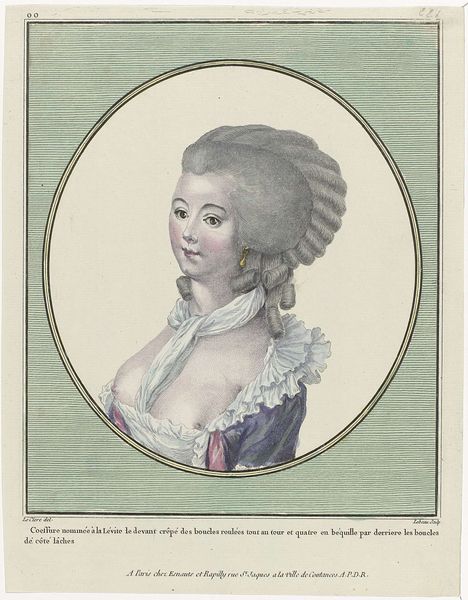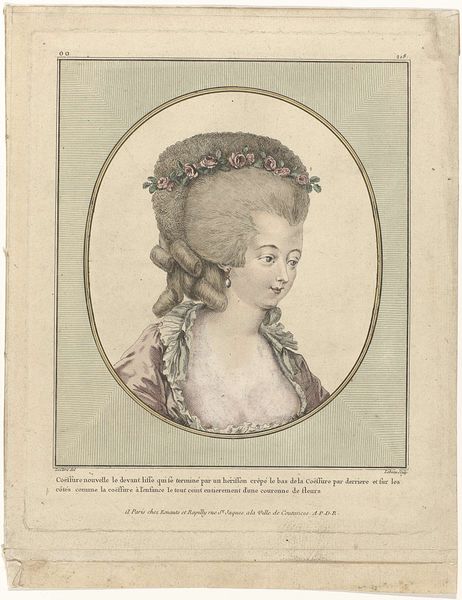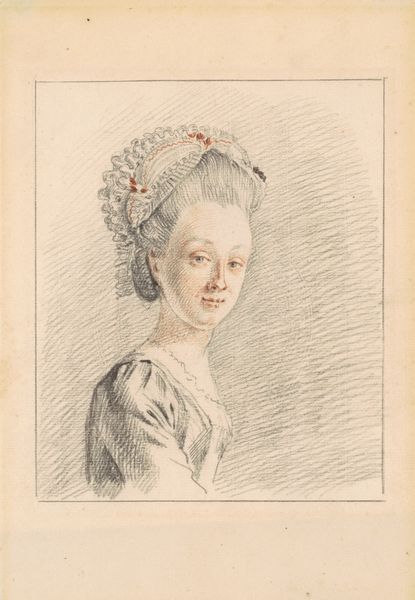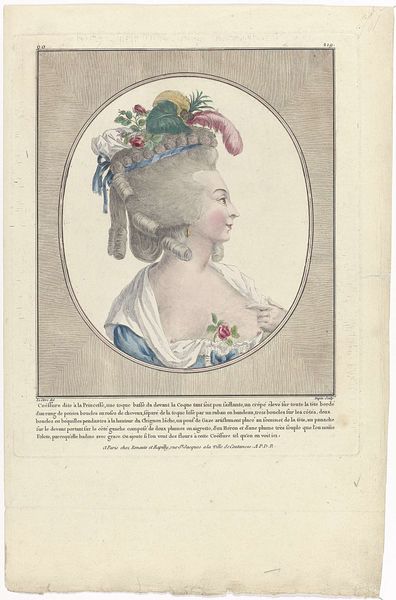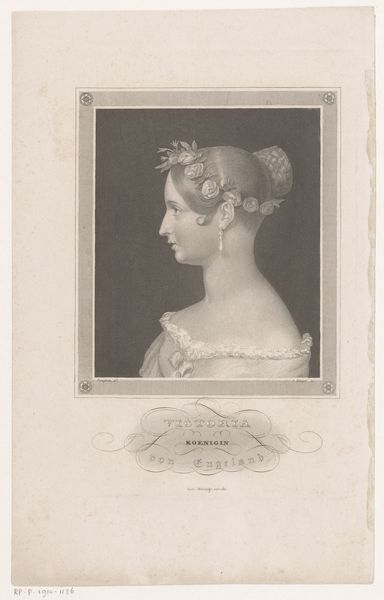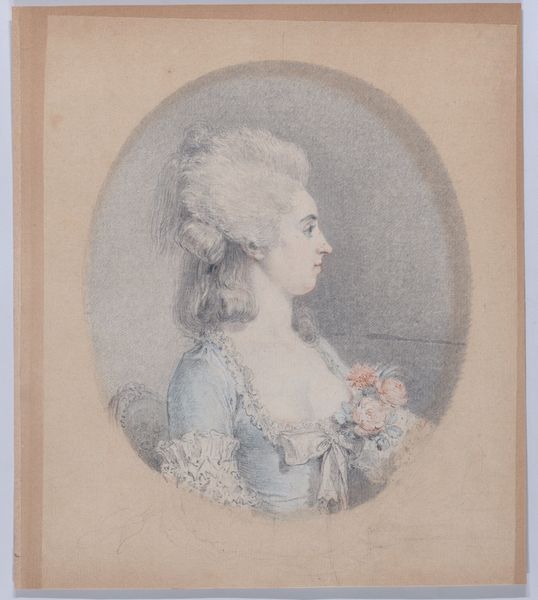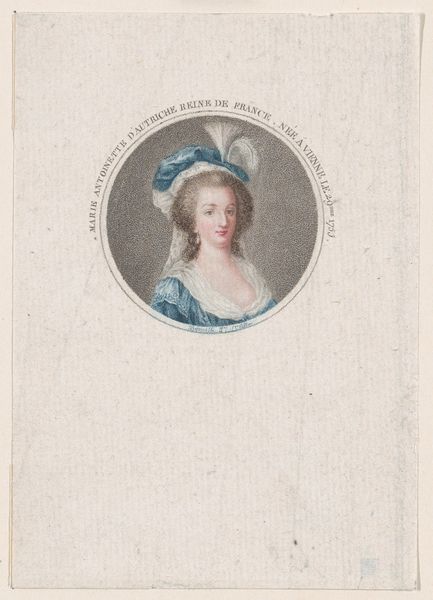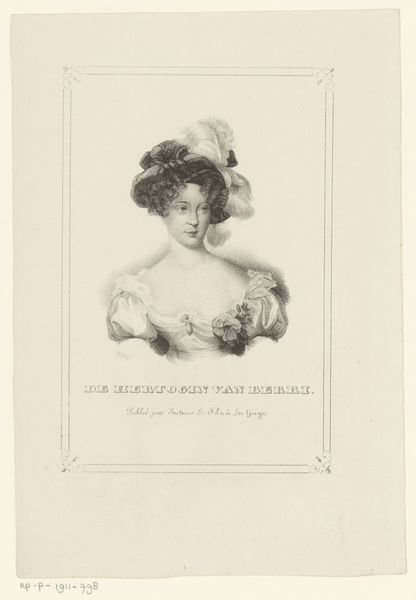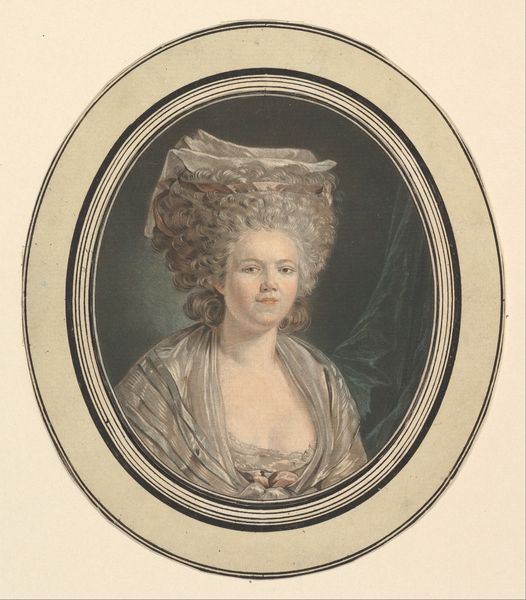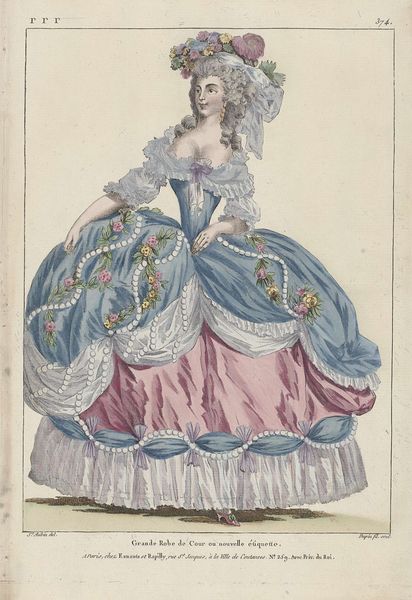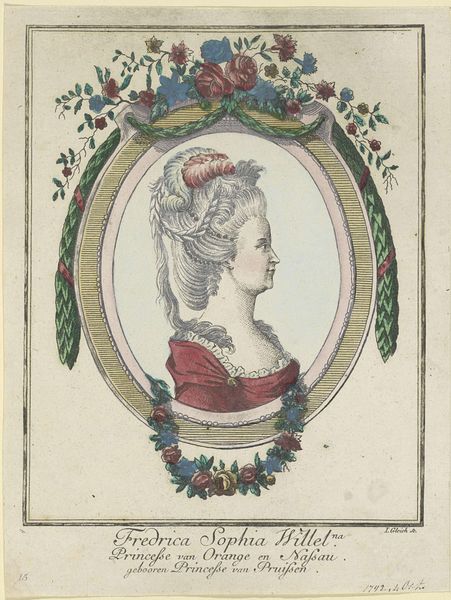
Coiffures, Poufs, Hats and Bonnets: Eleven Coiffures and Headdresses 1781
0:00
0:00
Dimensions: height 274 mm, width 222 mm
Copyright: Rijks Museum: Open Domain
Curator: So, we're looking at "Coiffures, Poufs, Hats and Bonnets: Eleven Coiffures and Headdresses" from 1781 by Pierre Adrien Le Beau. It's currently held at the Rijksmuseum. What strikes you initially about it? Editor: The sheer height and volume of that hairstyle is extraordinary! It completely dominates the composition. I'm also immediately drawn to the pastels; there’s a softness to the colors that’s quite appealing, despite the rather rigid pose. Curator: Precisely. Let's consider the structural elements. The print—it’s an engraving, actually—features an oval portrait format, cropped quite tightly. Note how the curves of the hair echo and amplify the framing oval itself. The lines and delicate shading contribute to its visual harmony. Editor: And how the context of this print speaks to a certain level of societal excess, if we think about what that coiffure would have represented in terms of time, money and the subjugation of labor that would have enabled it to be possible. The print itself could be read as promotion and advertisement, helping to ensure the propagation of particular social ideals and values, as part of the fashion machine of the period. Curator: Indeed. It presents an aspirational image. Note how the crown of flowers, although delicate, adds to the sense of artifice and cultivated elegance. We see the embodiment of Rococo ideals through the use of curved lines, asymmetrical patterns and graceful, lighthearted treatment. Editor: But also, it has an interesting, uneasy relationship with the body itself: her own hair is used almost as scaffolding, and while the plunging neckline shows her breast, the print directs most of our visual attention to the coiffure itself. Curator: An astute observation. It's a tension inherent in the portrait style of the period. Editor: It certainly makes you wonder about the power dynamics at play – who is really on display here, and for whom? Is this image simply reflecting trends, or is it actively shaping them? Curator: Fascinating questions to consider as we look more deeply at the forms, composition and how images from history resonate even now. Editor: Indeed. It has a very particular beauty, both unsettling and very appealing.
Comments
rijksmuseum about 2 years ago
⋮
Ladies’ hairstyles were ingenious works of art, built around a core of cushions and horsehair. Hair was piled high in curls and twists (chignons) and adorned with feathers, ribbons, artificial flowers, tulle and jewels to create various fancifully named poufs. Because the hair was dressed using animal fat and powdered with wheat flour, these poufs attracted all manner of insects. Far from hygienic, they moreover did not last long. When they went out, ladies protected their hairdos with a voluminous ribbed hood called a calèche 1. Hairdressers of the time, who styled themselves as artists, used prints to advertise their latest creations and craftsmanship 2 3.
Join the conversation
Join millions of artists and users on Artera today and experience the ultimate creative platform.
